Small spaces can often feel cramped and confining, making it challenging to create a comfortable and inviting atmosphere. However, with the right paint choices and techniques, you can significantly enhance the perception of space in even the tiniest of rooms. Paint is more than just a decorative element; it’s a powerful tool that can manipulate light, color, and perspective to make your home feel more spacious.
Whether you’re looking to brighten up a dark room or add depth to a flat space, understanding how to use paint effectively can transform your living environment. In this guide, we’ll explore practical paint hacks that can help your small spaces feel big, all while ensuring that your home looks stylish and cohesive.
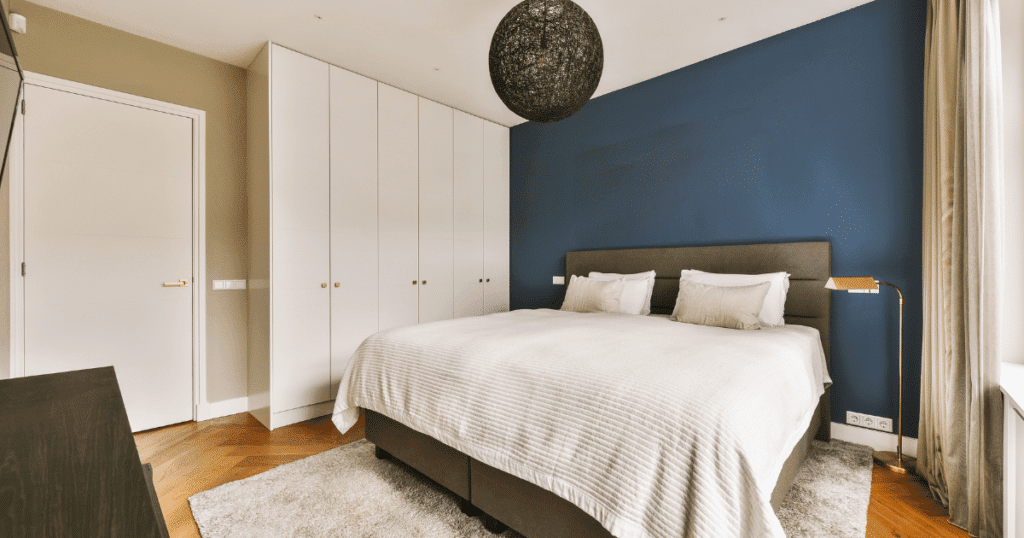
Light Colors for Openness
When it comes to making a small room feel larger, light colors are your best friend. Shades like soft whites, light grays, and pastels have the remarkable ability to reflect more natural and artificial light, which instantly brightens a room and creates an airy, open feel. This reflection of light not only illuminates the space but also blurs the boundaries between the walls, ceiling, and floor, making the room appear bigger than it actually is.
The psychological effects of light colors are equally powerful. Rooms painted in lighter shades tend to evoke feelings of calmness and spaciousness, which can help reduce the sensation of being confined in a small area. Colors like pale blue, soft yellow, or light beige can also bring a sense of warmth without overwhelming the space, ensuring that your room feels inviting and comfortable rather than stark and cold. By choosing the right light color, you can transform any small space into a bright, open sanctuary.
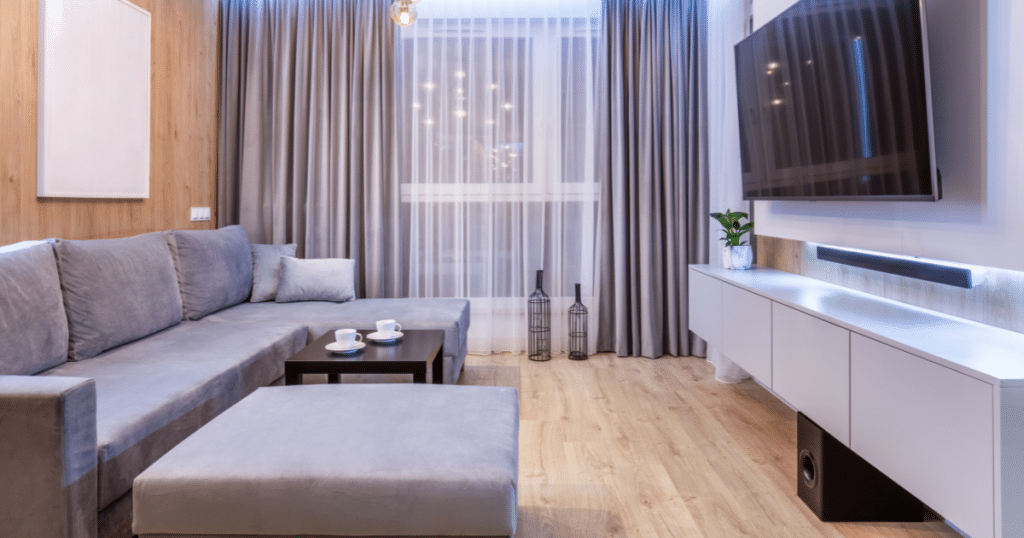
Monochromatic Color Schemes
Another effective strategy for making small spaces feel larger is the use of a monochromatic color scheme. This technique, also known as color drenching, involves selecting different shades of a single color family to create a cohesive and harmonious look. By sticking to variations of one color, you can create a seamless transition from wall to wall, reducing the visual breaks that can make a room feel smaller and more cluttered.
Monochromatic schemes are particularly useful in compact spaces because they minimize contrast, which can visually divide a room and make it appear more confined. Instead, this technique unifies the space, allowing the eye to travel smoothly across the room without interruption. For example, using various shades of gray—from a soft, misty gray on the walls to a darker charcoal for accents—can add depth and dimension while maintaining a clean, uncluttered look. The result is a room that feels more spacious and sophisticated, with a subtle elegance that can adapt to any style of decor.
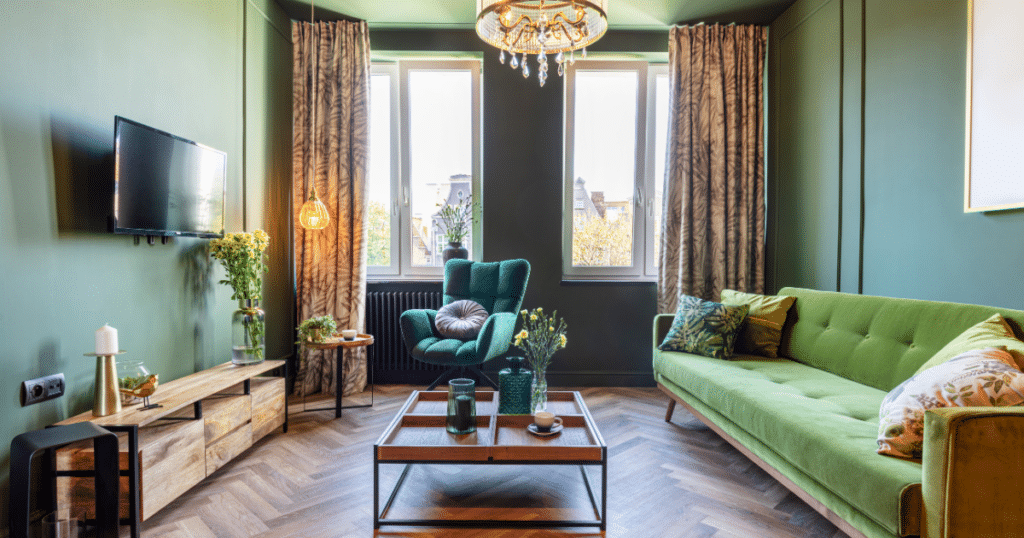
When Dark Colors Work
It’s a common misconception that dark colors make rooms feel smaller and more cramped. While this can be true when dark colors are applied indiscriminately, using them strategically can actually add depth and sophistication to a space, making it feel more expansive. The key is knowing when and where to apply these bold hues.
One effective technique is to use dark colors on an accent wall. This creates a focal point that draws the eye, making the room feel larger by emphasizing depth. For example, a deep navy or rich emerald green on one wall can make the room feel more dynamic and give the illusion of added dimension. The contrast between the dark accent wall and lighter surrounding walls adds interest without overwhelming the space.
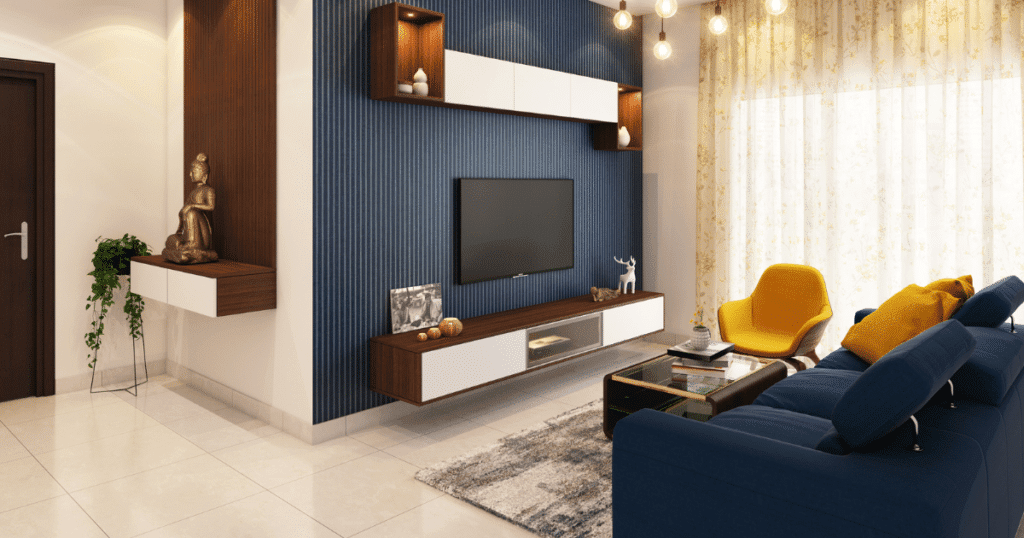
Dark colors can also work exceptionally well in well-lit areas where natural light can balance the intensity of the color. In a room with plenty of sunlight, a dark shade like charcoal or even black can create a chic, modern look that feels dramatic yet spacious. The natural light helps to soften the darkness, preventing the room from feeling closed in.
When using dark colors, consider pairing them with light-colored furniture and decor to maintain a balanced look. For instance, a black accent wall combined with light gray furnishings and metallic accents can create a sophisticated and elegant atmosphere. This contrast not only enhances the perception of space but also adds a touch of luxury to the room. By thoughtfully integrating dark colors into your design, you can achieve a bold and sophisticated look that defies the traditional rules of small-space decorating.

The Power of Accent Walls
Accent walls are a powerful design tool, especially in small spaces where enhancing the perception of size is crucial. By directing attention to a specific area, an accent wall creates an optical illusion that can make a room feel larger and more dynamic. The strategic use of a bold or contrasting color on one wall adds depth, focus, and even a touch of drama, transforming an ordinary space into something special.
When choosing an accent wall, select one that already serves as a natural focal point, such as the wall behind a bed, sofa, or fireplace. This approach ensures that the accent wall enhances the room’s overall design and flow. The key to a successful accent wall is contrast—whether it’s a deep, rich color against soft neutrals or a lighter shade against darker walls, the difference in color adds interest and dimension, making the room appear more spacious.
By thoughtfully selecting both the wall and the color, an accent wall can elevate the aesthetic appeal of your room while also making the space feel more open and inviting. Whether you opt for a bold, dramatic hue or a subtle, calming shade, the right accent wall can significantly transform your small space into a visually appealing area that feels larger than it is.
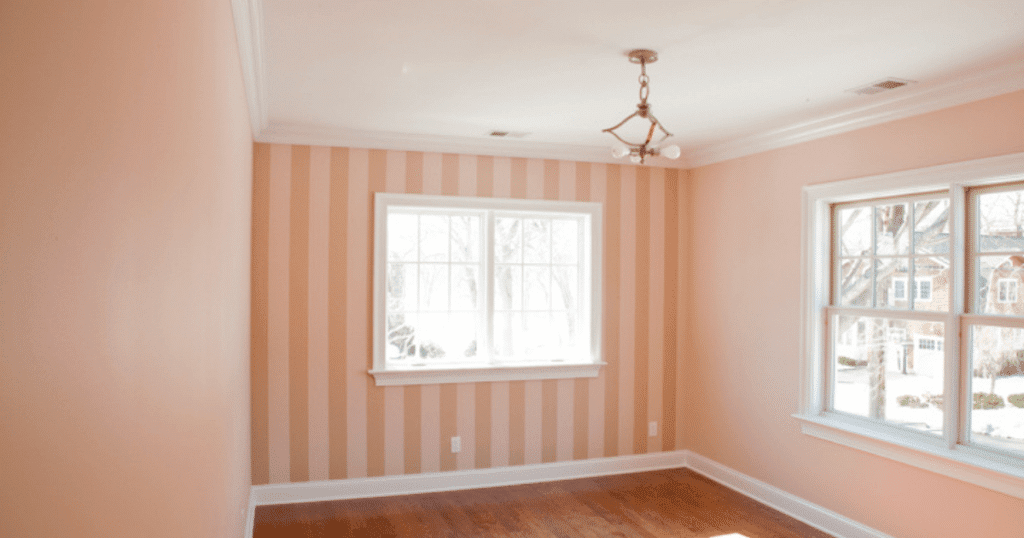
Vertical Stripes and Other Patterns
Patterns and textures are powerful tools for making small spaces feel larger, with vertical stripes being particularly effective. By drawing the eye upward, vertical stripes create the illusion of higher ceilings, giving a room a more open and airy feel. The width and color contrast of the stripes are crucial; narrow, subtle stripes can gently lift the space, while wider, bolder stripes make a more dramatic statement. For example, a combination of soft white and pale gray stripes can subtly elevate the room’s height, whereas deep navy and crisp white stripes add a striking modern touch.
In addition to stripes, other patterns like chevrons, herringbone, or delicate florals can add interest and texture without overwhelming the space. These patterns work best when used sparingly, such as on a single feature wall, to create depth and dimension. Balancing these patterned elements with solid colors ensures the room remains cohesive and spacious. Thoughtfully incorporating these techniques allows you to enhance your small space’s visual appeal while making it feel larger and more inviting.

Raising the Roof
One of the simplest yet most effective ways to make a small room feel larger is to paint the ceiling a lighter color than the walls. This technique creates the illusion of height, as the lighter ceiling seems to recede, making the room appear taller. Soft, light colors such as white, pale blue, or light gray are ideal for this purpose. By visually raising the roof, these shades can transform a small, enclosed space into an airy, open environment.
In addition to color choice, consider the finish of your ceiling paint. High-gloss finishes are particularly effective in small rooms because they reflect more light, which enhances the feeling of spaciousness. The sheen of a high-gloss paint can also add a touch of elegance and modernity to the room, making it feel both larger and more sophisticated. This reflective quality helps to bounce light around the room, reducing shadows and further contributing to the illusion of a higher ceiling.
Trim and Molding
Trim and molding are often overlooked when it comes to maximizing space perception, but they can play a crucial role in enhancing a room’s dimensions. Painting trim and moldings in a slightly lighter shade than the walls creates a subtle frame effect that defines the room’s boundaries while simultaneously making the walls appear to recede. This technique can give the impression of added depth and space, as the lighter trim draws the eye outward, expanding the perceived size of the room.
For example, if your walls are painted a medium gray, consider using a lighter shade of gray or even white for the trim. This contrast not only highlights architectural details but also makes the room feel more expansive. Crown molding painted in a lighter color can also help draw the eye upward, reinforcing the illusion of height created by a lighter ceiling.

Sampling and Visualization
Before committing to a full room paint job, it’s essential to test your chosen colors with small samples on the walls. This allows you to see how the colors interact with the room’s lighting, furniture, and other elements. Paint colors can look very different under various lighting conditions, so testing a small area first can help you avoid making a choice that might feel too overwhelming or not impactful enough in your space.
In addition to physical samples, take advantage of online tools and apps that allow you to visualize different colors in your room. These tools let you upload a photo of your space and virtually “paint” the walls with your chosen colors. This visualization can be incredibly helpful in making an informed decision, as it provides a clearer picture of how the final result will look. By experimenting with different shades and combinations, you can confidently choose the best color scheme for your small space.
Bringing It All Together
Choosing the right paint colors and techniques is essential for transforming small spaces into areas that feel open, inviting, and stylish. From selecting light or dark colors strategically to using patterns, textures, and finishing touches like trim and ceilings, there are many ways to enhance the perception of space in your home. Thoughtful paint selection and application can make all the difference in creating a comfortable and visually appealing environment, regardless of the room’s size.
If you’re ready to transform your small spaces and need expert advice, AG Williams Painting Company is here to help. Our team of professional painters can guide you through the process, from choosing the perfect colors to achieving a flawless finish. Contact us today to schedule a consultation and take the first step towards making your home feel bigger and brighter.